Ultimate LA Galbi (Korean BBQ Short Ribs)
Make the best LA Galbi at home with this proven recipe – it tastes better than what you find in restaurants! The distinct two-step marination guarantees juicy, tender Korean BBQ short ribs with an unmatched, exquisite flavor. Learn different cooking methods for perfect galbi every time.
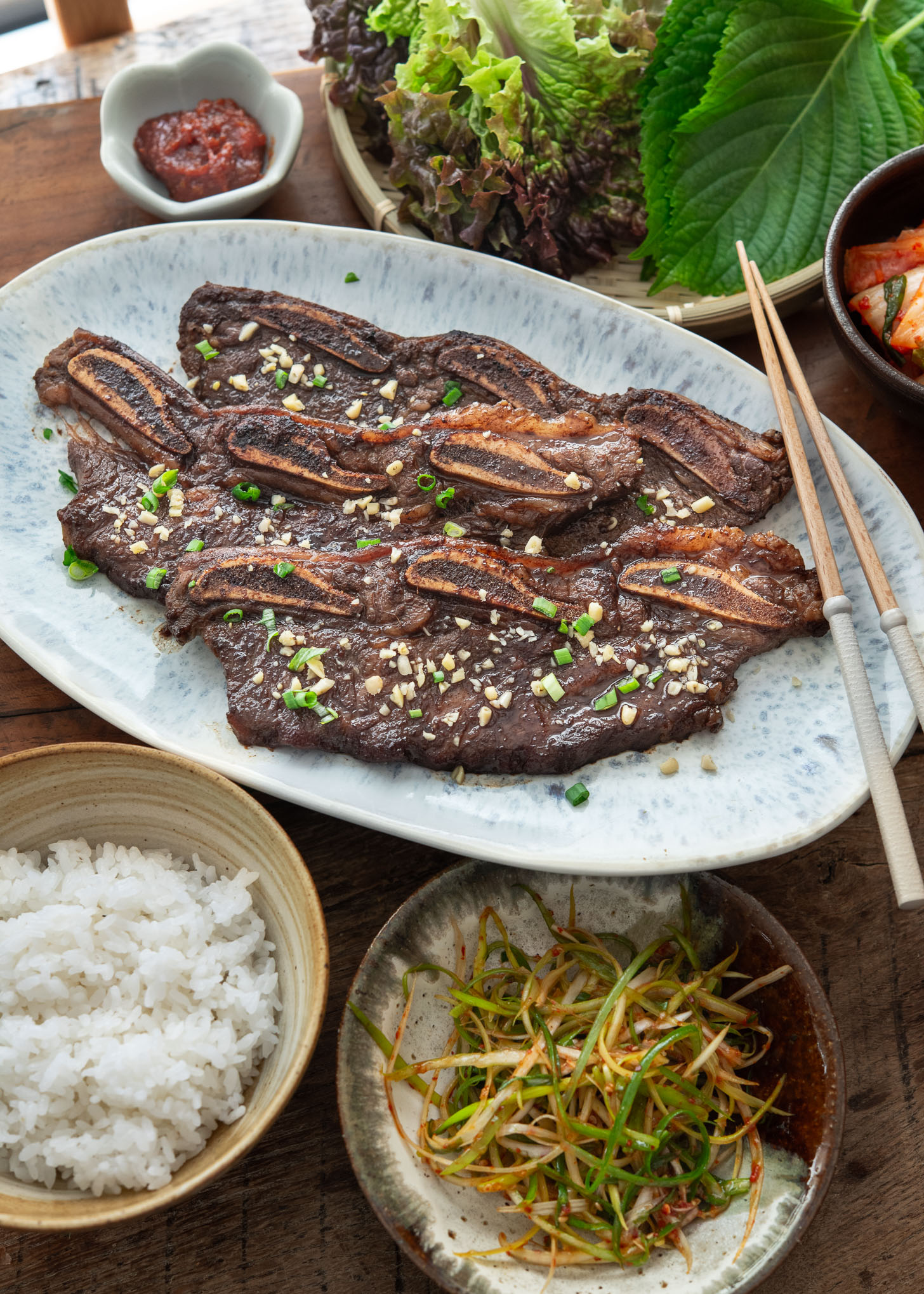
“I’ve been using this receipe for many years now. It is beyond the best. The meat is tender and delicious. I do recommand a 100%.”
Zainab
Juicy and succulent Korean BBQ short ribs, also known as LA galbi, are a popular beef dish in Korean cuisine. This particular style of short ribs is a favorite both at home and in Korean restaurants.
What’s great is that making LA galbi at home is both easy and simple. While it does require some time—mainly for marinating—the effort involved is minimal. This makes it ideal for cooking on a hot BBQ grill, broiling in the oven, or searing on the stovetop.
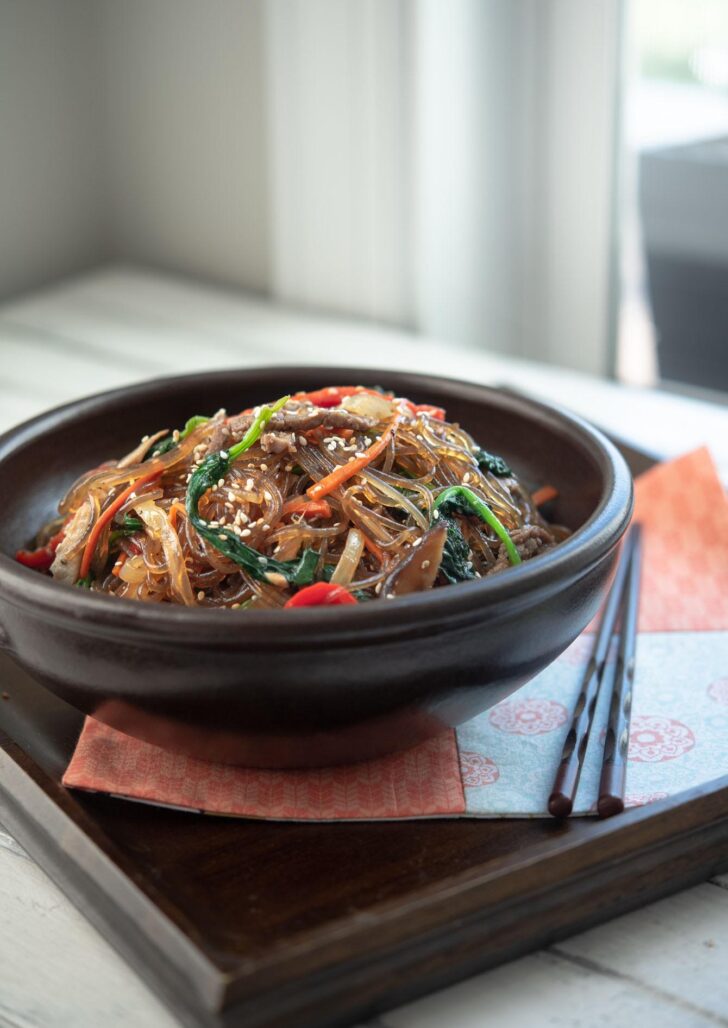
Get new recipes via email:
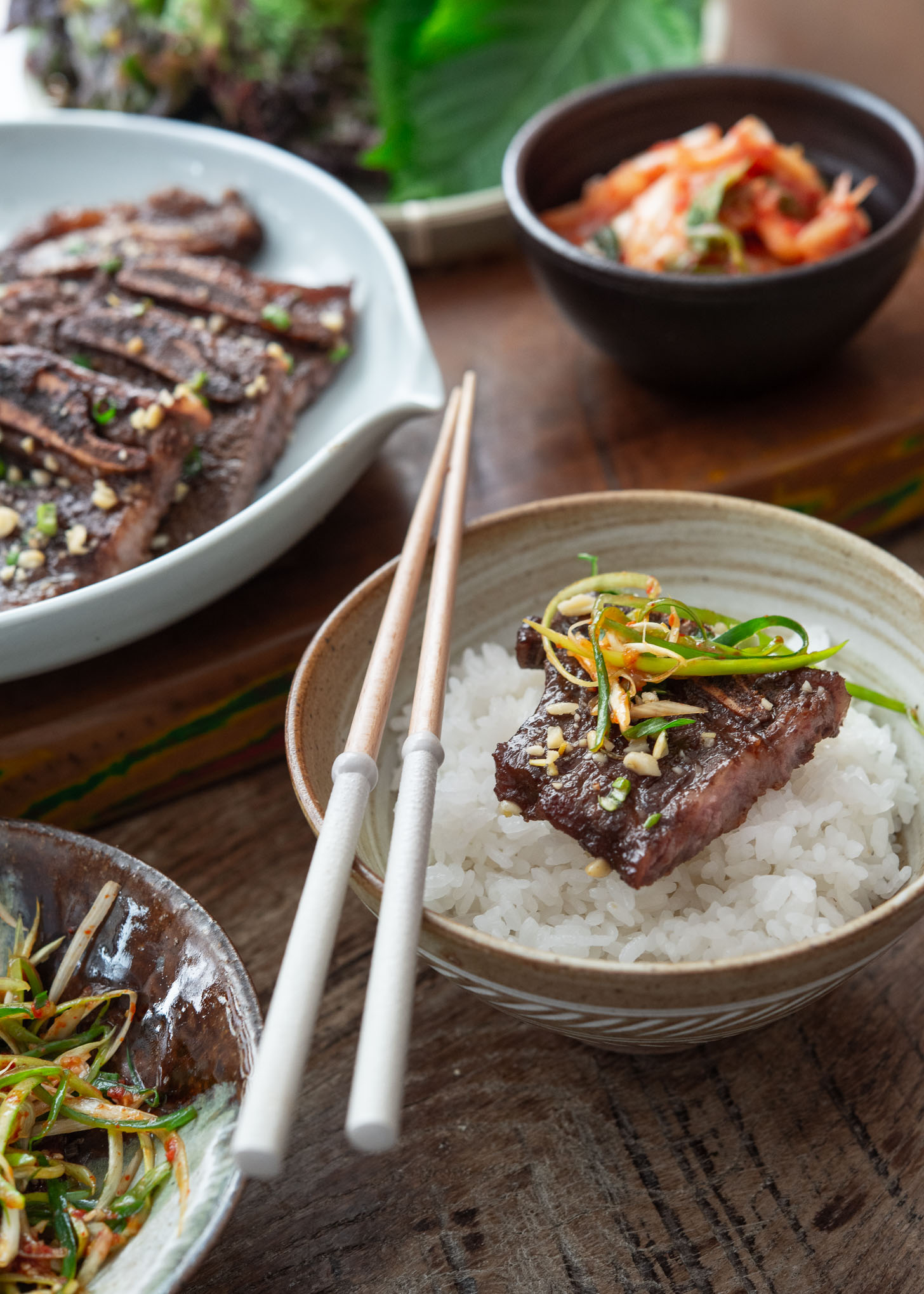
I’m excited to share an ultimate LA galbi recipe with you, one that outshines others. It comes from a friend who learned it from a renowned master chef in Korea, known for teaching exclusively to a select few.
This well-guarded secret recipe promises an upscale flavor that’s sure to impress. My friend shared a fantastic tip for preparing this delicious dish, and I believe you’re incredibly fortunate to learn it through this post.
It’s the best galbi I’ve ever made, and according to my family, it beats anything they’ve tasted in restaurants. After all, there’s something special about enjoying a favorite dish made by a loved one, right? It’s often unbeatable.
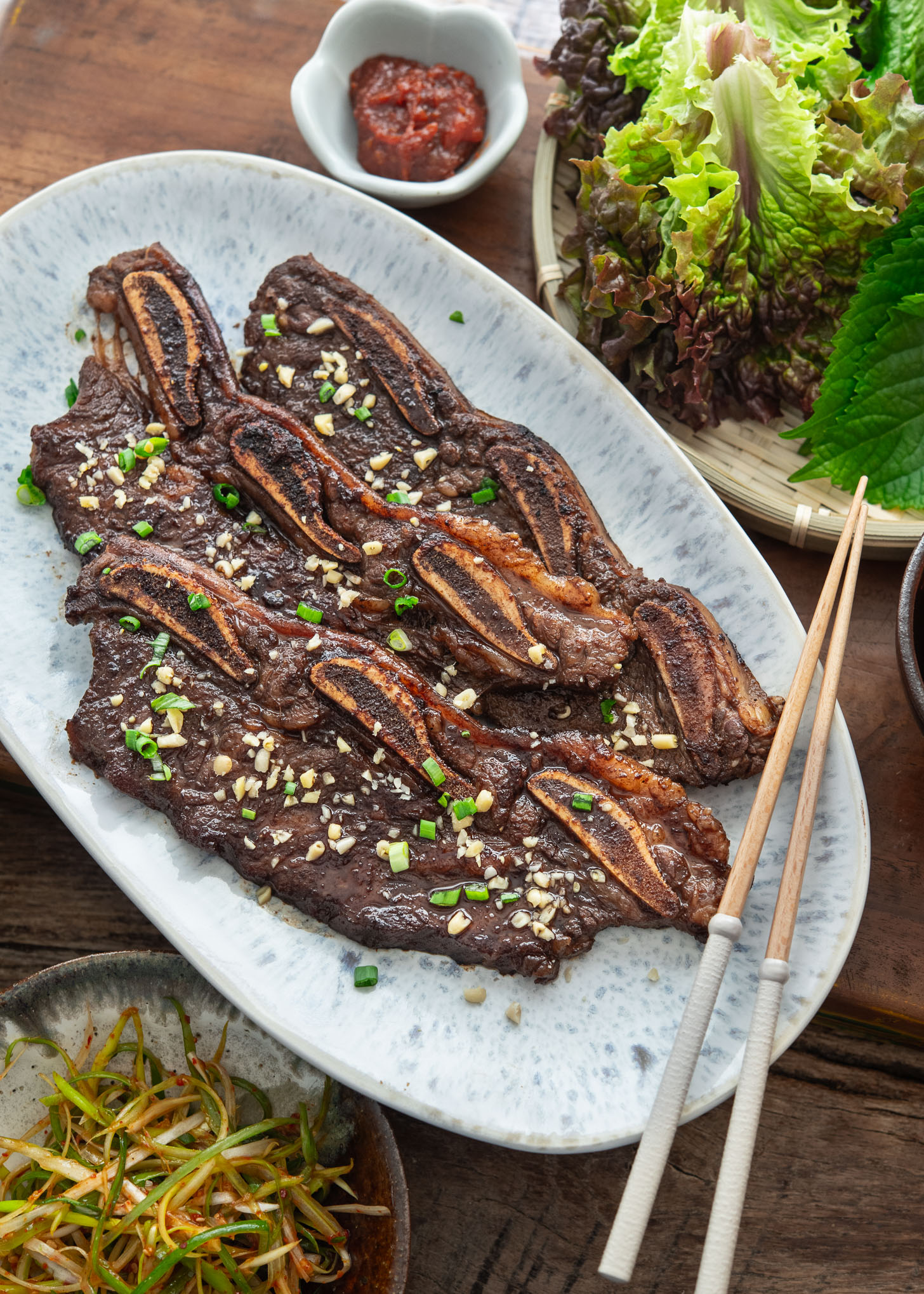
What Makes This Recipe Stand Out
Two-Step Marination Process
Unlike typical Korean galbi recipes that use a single marinade, this recipe introduces a two-step marination process that enhances the meat’s flavor and tenderness.
The first stage of marination involves soaking the short ribs in a blend of onion and fruit puree for a brief period (approximately 1-2 hours). The pear and kiwi in the puree contribute a mild sweetness, and their acids and enzymes significantly tenderize the meat without overdoing it.
After this stage, the puree is discarded along with any fine bone fragments, ensuring the meat retains a light and clean beef taste without the extra fibrous material from the puree.
Galbi Sauce
The second marination step uses a special galbi marinade sauce made with two types of soy sauce, brown sugar, garlic and ginger powder to deeply flavor the meat. This stage can last from 4 hours to overnight in the refrigerator, allowing the rich flavors to fully permeate the ribs.
This dual marination technique results in more succulent ribs with a clean taste profile, setting this recipe apart and above traditional methods.
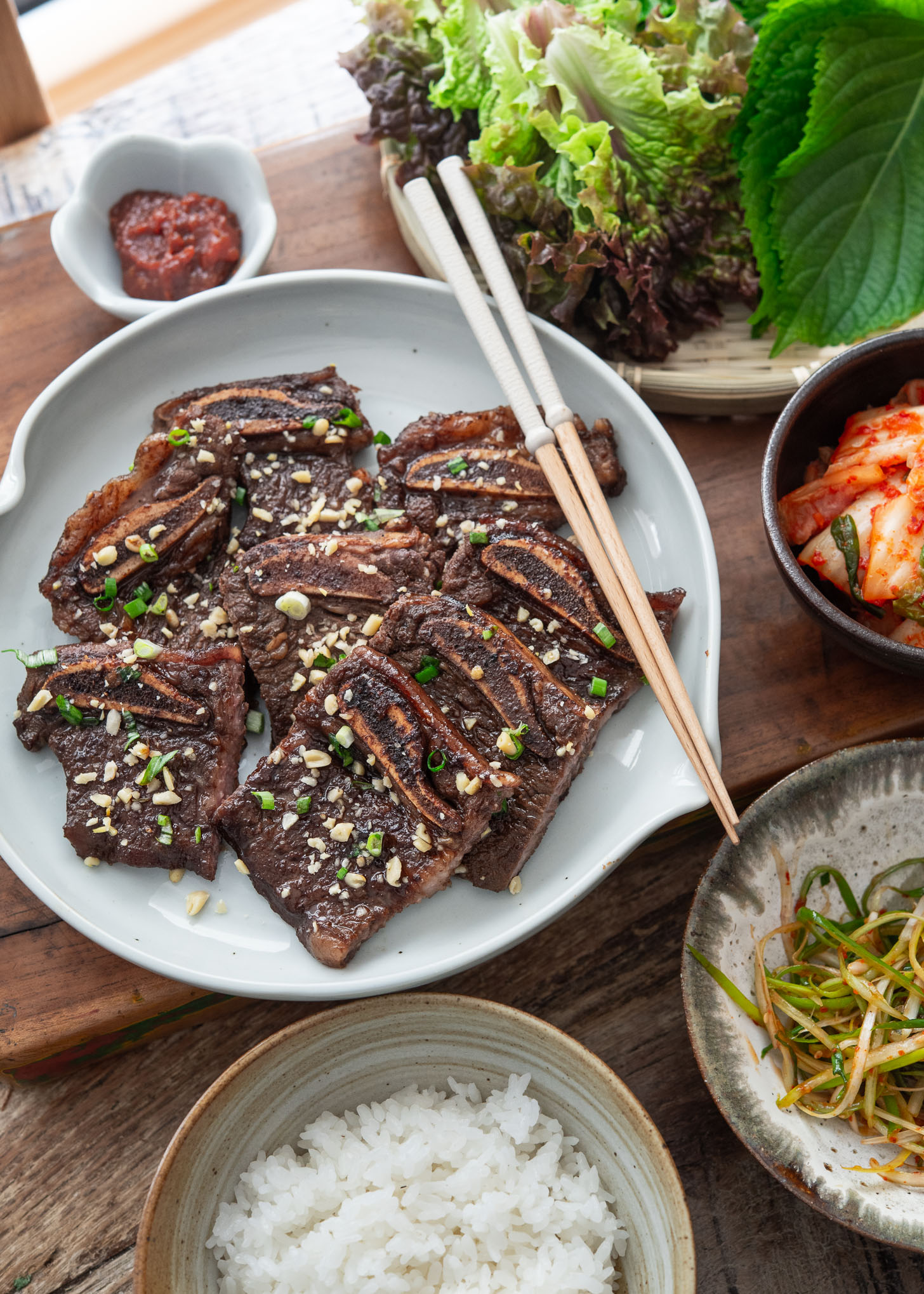
Traditional galbi vs LA galbi
Korean traditional galbi and LA galbi offer delicious takes on Korean BBQ short ribs, each with unique differences. The primary difference lies in the method of cutting the ribs.
Traditional Korean galbi features whole, bone-in short ribs, often butterflied for a thinner beef layer, and marinated in a flavorful soy sauce mix before grilling. This method delivers a deep, authentic taste cherished for generations in Korea. See my Galbi-jjim (braised beef ribs) and Galbitang (beef short rib soup) recipes as a reference.
LA galbi, named after Los Angeles where it gained popularity among Korean immigrants, or possibly from the term “lateral cut,” introduces a convenient twist to the classic. The ribs are sliced across the bone into thinner pieces for quicker marination and cooking, maintaining a tender texture and rich flavor.
Both versions are incredibly tasty and offer a unique Korean food experience. Whether you prefer the authenticity of traditional galbi or the convenience and tenderness of LA galbi, you’re in for a treat.
Korean Beef Short Ribs
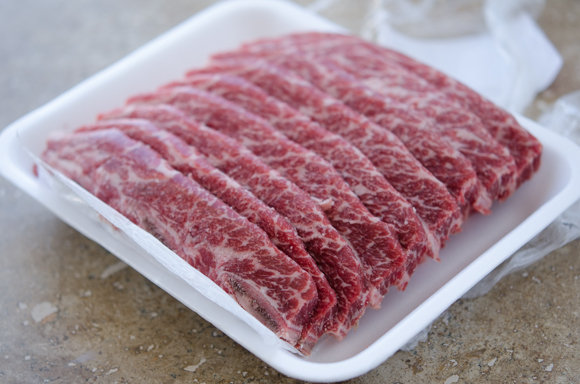
The key to delicious galbi lies in the quality of the meat. While high-quality Korean short ribs might be pricier, they’re a worthwhile investment for special occasions, promising a memorable Korean galbi experience.
How to select
Korean beef short ribs come in two different cuts, both of which are available in Korean markets or other Asian grocery stores.
- English Cut: This cut features ribs that are separated and cut along the meat, with one bone per piece. It’s ideal for galbi jjim (braised short ribs) or can be butterflied for traditional galbi preparation.
- Flanken Cut: Also known as LA Galbi, this is the cut I recommended for this recipe. The ribs are thinly sliced across the bones, usually including three bone sections per slice.
- A 3/8-inch thick cut is most ideal, but make sure it’s no thicker than 1/2 inch.
- The flanken cut tends to be more affordable than the English cut.
Ingredient Substitution Tips for the Recipe
- Korean Pear: A traditional ingredient in galbi. If unavailable, sweet apple or Bosc pear from the local grocery stores are good alternatives.
- Kiwi: A potent tenderizer. Use only half a kiwi to avoid compromising the meat’s texture. If kiwi is not available, substitute with pineapple chunks in the same amount for a similar effect.
- Korean Soup Soy Sauce: Adds a unique umami and depth alongside regular soy sauce. Its distinct flavor enhances the dish’s overall taste.
- Korean Plum Extract: A staple in Korean marinades, available at Korean markets. If you can’t find it, sweet rice wine makes a suitable substitute.
Marinating Korean Short Ribs
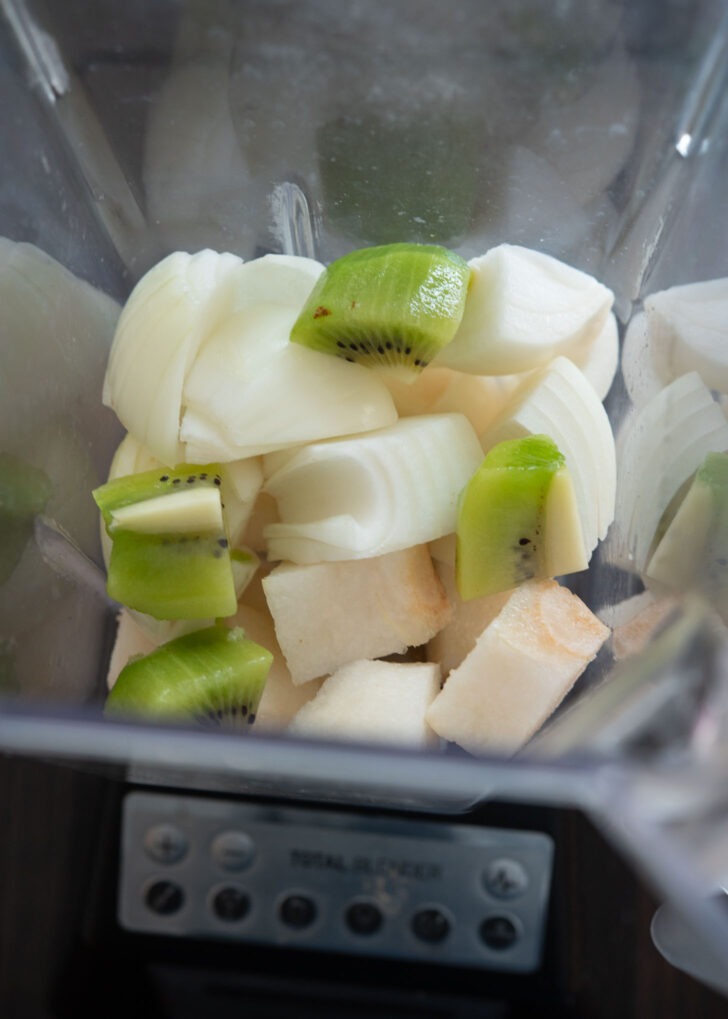
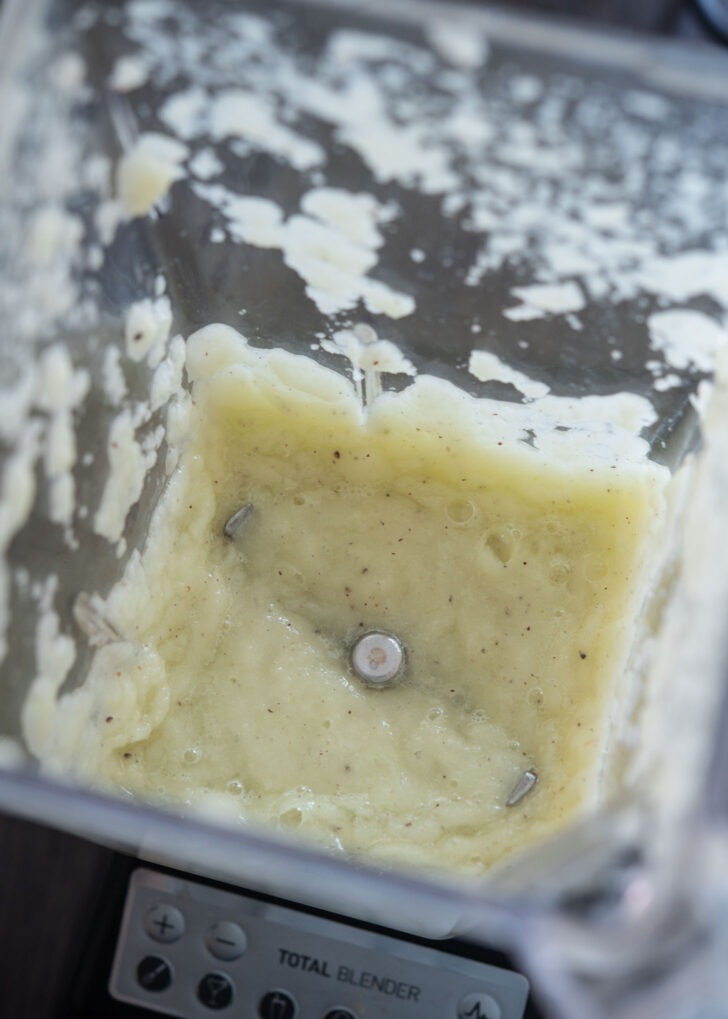
- Start by blending onion, pear, and kiwi in a blender or a food processor until smooth. Alternatively, grate onion, pear, and kiwi into a smooth puree using a grater.
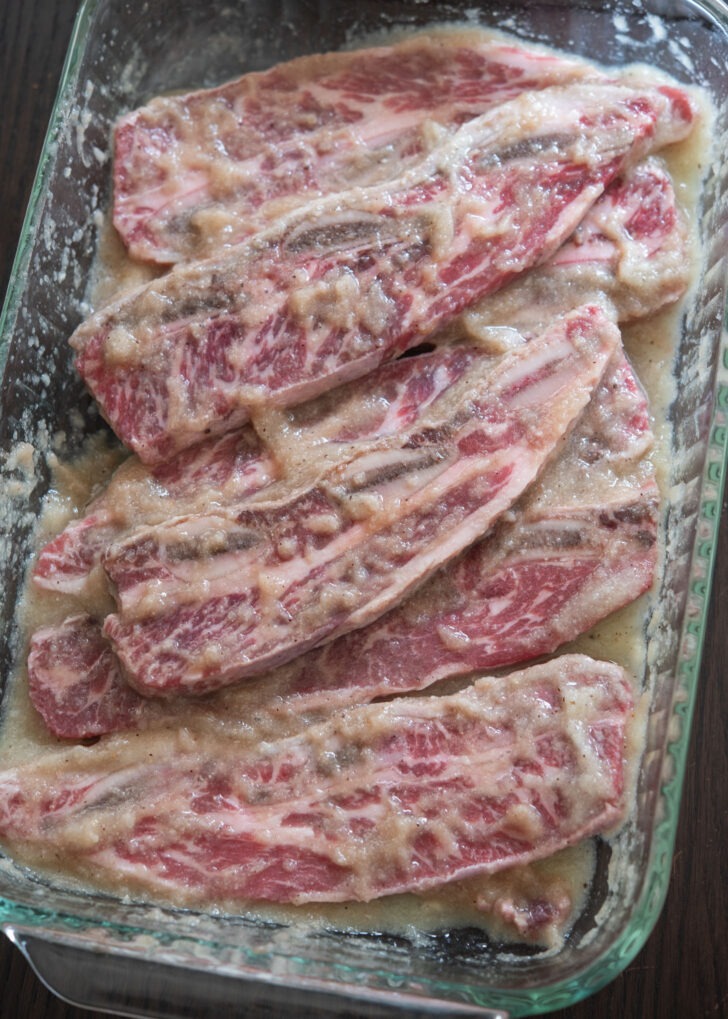
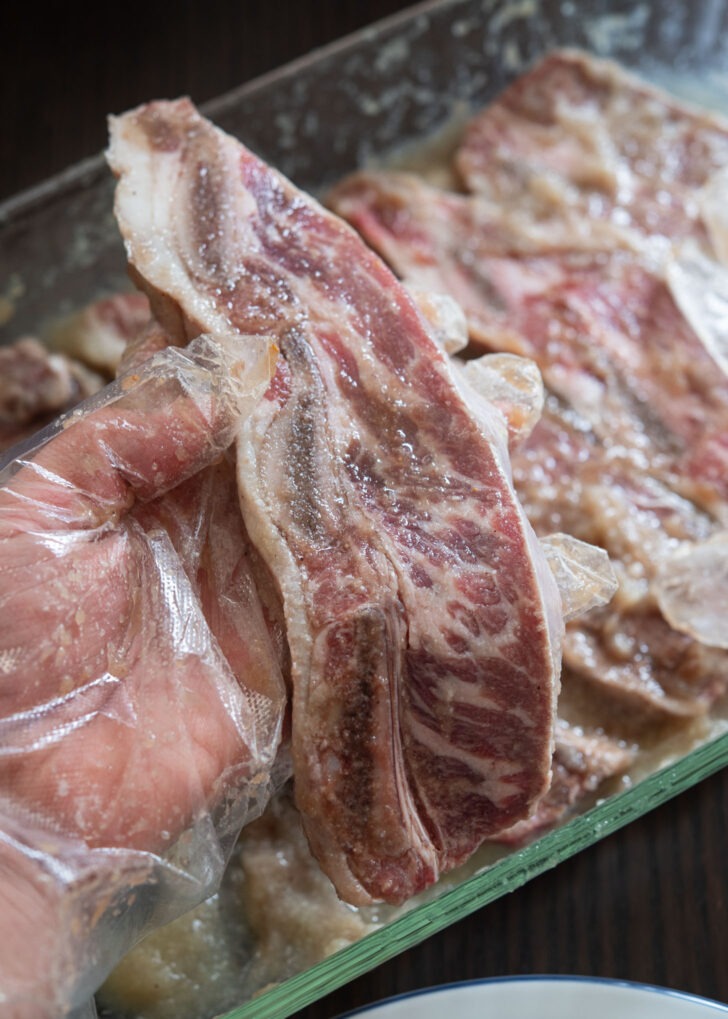
- Next, pour the marinade over the ribs ensuring they are evenly coated with the puree.
- 9×13-inch Pyrex pan would work the best
- Let the ribs marinate at room temperature for 45-60 minutes, or refrigerate for 2 hours. Remove the ribs from the puree, scraping off excess puree.
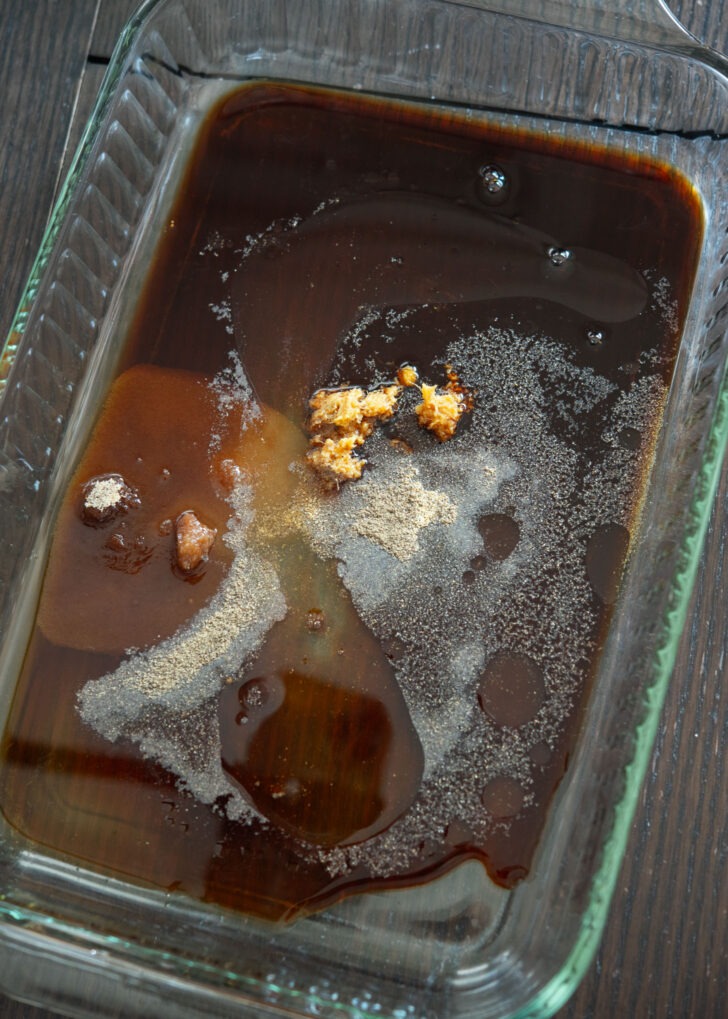
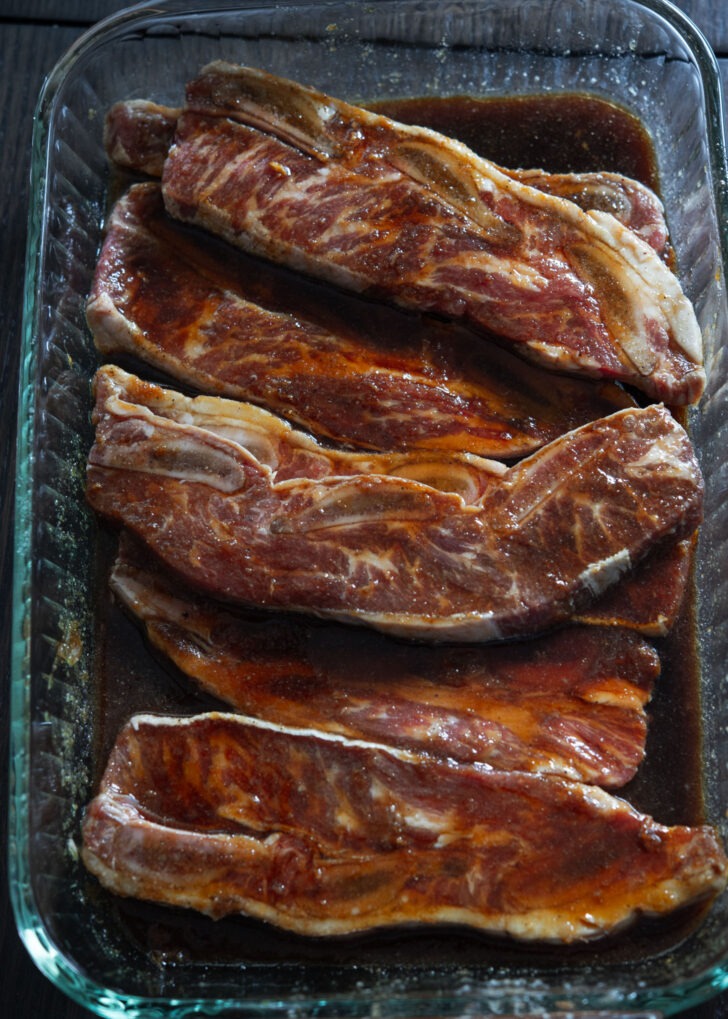
- In another dish, combine soy sauce, Korean soup soy sauce, brown sugar, garlic powder, ginger, sesame oil, and pepper. Mix well, then return the ribs to this marinade, ensuring even coating. Cover and refrigerate for at least 4 hours or overnight.
- Before cooking, allow the ribs to reach room temperature for 15 minutes.
How to Cook LA Galbi
- Grilling: You can cook LA galbi on charcoal, gas grills, or a stovetop grill pan. In Korea, wood charcoal grills are popular in the restaurants. Heat your grill to medium-high and cook the ribs for 2-3 minutes on each side until they develop a nice crust around the ribs!
- These ribs will not take long at all to cook since they are cut so thinly.
- Broiling: For oven broiling, set your oven to broil and preheat. Arrange the ribs on a broiling pan in a single layer, and place it about 6 inches below the broiler. Broil for 5-6 minutes until slightly charred, then flip and cook for another 3-4 minutes, keeping an eye to prevent burning.
- Pan Searing: To prevent burning from the sugary marinade, use a technique similar to quick braising. Preheat a large non-stick pan over medium heat, add the ribs in a single layer, and cook for 4-5 minutes.
- If the pan dries, add a spoonful of remaining marinade. Flip the ribs and continue cooking for another 4-5 minutes until the sauce is absorbed and the ribs are well browned.
- This method is great for when marinating time is short.
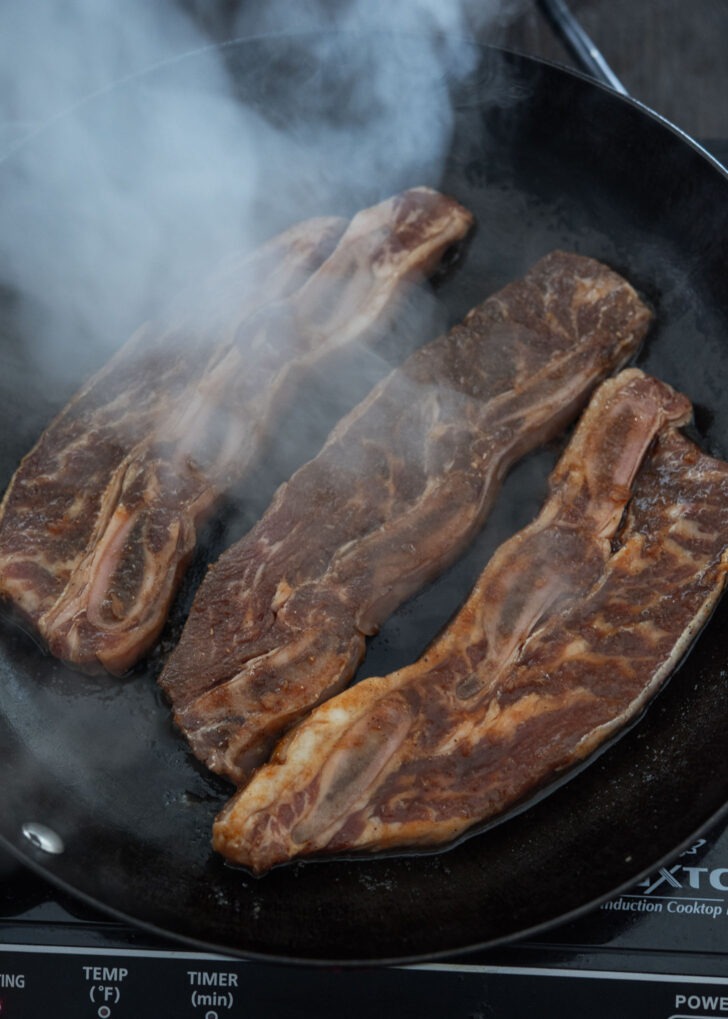
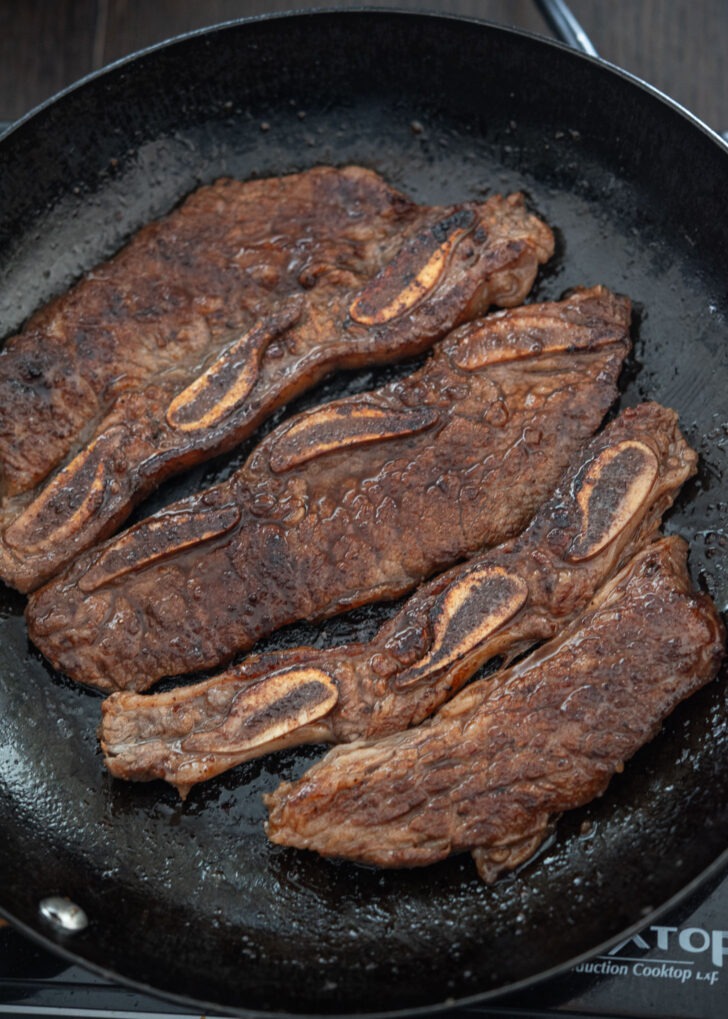
What to serve with
Korean beef short ribs pair perfectly with white rice and a variety of Korean traditional side dishes. Recommended sides include Pa Muchim (Green Onion Salad), Spicy Cucumber Salad, and Kkaennip Kimchi (Perilla Leaf Kimchi).
For more side dish ideas, explore my collection of Korean banchan. Also, wrapping these succulent BBQ ribs in lettuce with Ssamjang (Korean dipping sauce) is essential.
Gather a selection of salad greens and leaves to kick off your Korean BBQ party, as shown in my Samgyupsal post. Enjoy your Korean ribs with your loved ones!
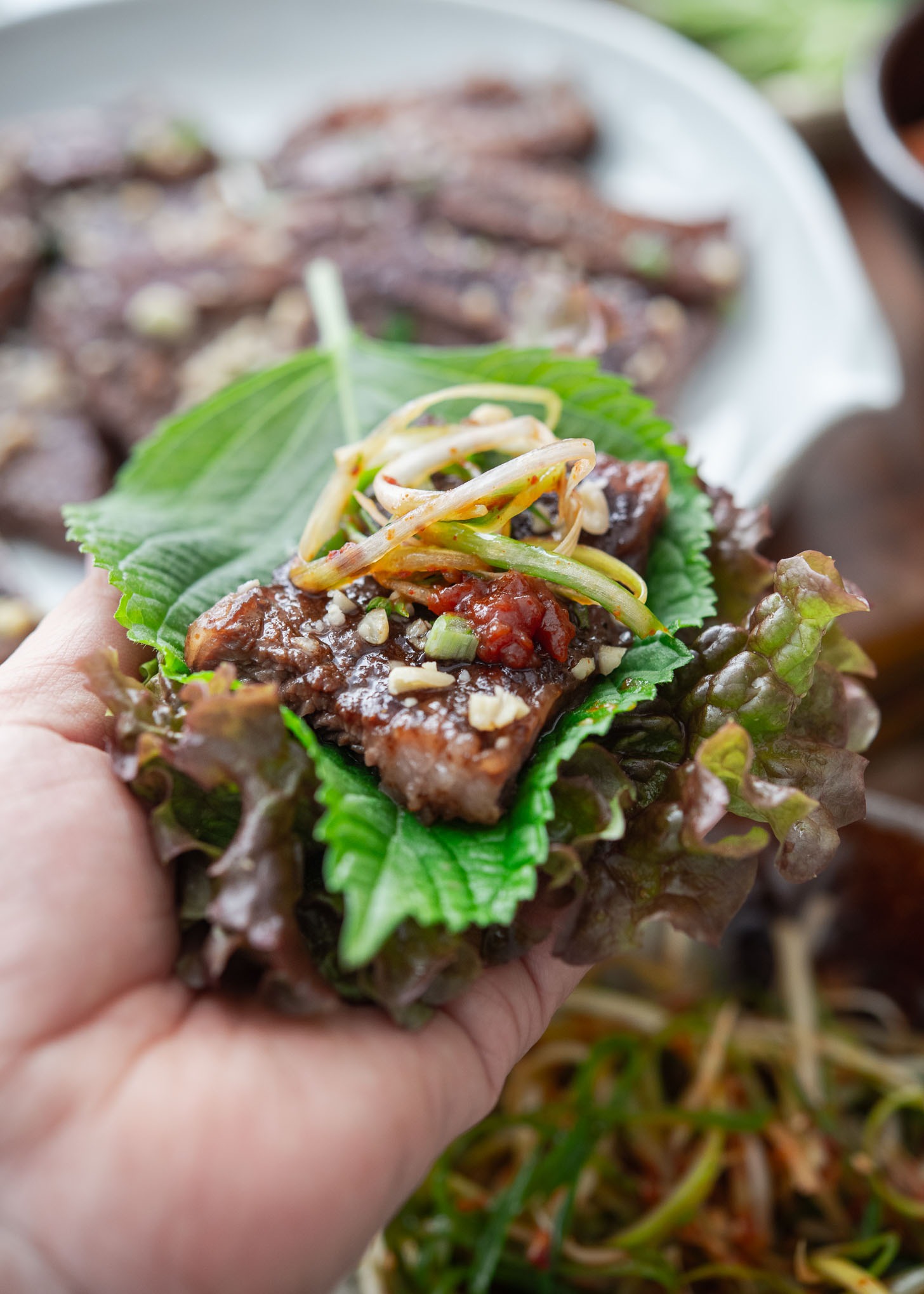
More Popular Korean Beef Dishes
- Beef Bulgogi Recipe (Korean BBQ Beef)
- Korean Braised Beef Short Ribs (Galbi-Jjim)
- Easy Korean Beef Patties (Tteokgalbi )
- Crispy Bulgogi
- Korean Ground Beef Bulgogi Bowl
- Beef and Cucumber Stir-Fry
NOTE: This recipe was originally posted in February 2014. While the recipe itself remains unchanged, I’ve updated the images and added more information to enhance the content.
If you enjoy this recipe, please rate it and share your experiences in the comments below—I’d love to hear from you! On Instagram? Tag me to showcase your creation. For more delicious recipes, don’t forget to subscribe to our newsletter!

Ultimate LA Galbi (Korean BBQ Short Ribs)
Recipe Video
Ingredients
- 2-1/2 lb beef short ribs, flanken cut
- 1/2 large onion, diced
- 1/2 large Asian pear, peeled and diced
- 1/2 kiwi, peeled and diced
- 1/3 cup soy sauce
- 2 tbsp Korean soup soy sauce (gukganjang)
- 2 tbsp brown sugar
- 1/2 tsp garlic powder
- 1 tsp ginger paste, or 1/4 teaspoon ginger powder
- 1 tbsp Korean plum extract (maeshil-cheong), or sweet rice wine
- 1 tbsp sesame oil
- 1/4 tsp freshly grated black pepper
Instructions
First Marination
- Start by blending onion, pear, and kiwi in a blender or a food processor until smooth. Alternatively, grate onion, pear, and kiwi into a smooth puree using a grater.
- Pour the marinade over the ribs ensuring they are evenly coated with the puree. 9×13-inch Pyrex pan would work the best. Let the ribs marinate at room temperature for 45-60 minutes, or refrigerate for 2 hours. Remove the ribs from the puree, scraping off the excess puree.
Second Marination
- In another dish, combine soy sauce, Korean soup soy sauce, brown sugar, garlic powder, ginger, sesame oil, and pepper. Mix well, then return the ribs to this marinade, ensuring they're evenly coated. Cover and refrigerate for at least 4 hours or overnight.
- Before cooking, allow the ribs to reach room temperature for 15 minutes.
How to cook LA galbi
- Grilling: LA galbi can be grilled on charcoal, gas grills, or a stovetop grill pan. In Korea, wood charcoal grills are popular in the restaurants. Heat your grill to medium-high and cook the ribs for 2-3 minutes on each side until they develop a nice crust around the ribs! These ribs will not take long at all to cook since they are cut so thinly.
- Broiling: For oven broiling, set your oven to broil and preheat. Arrange the ribs on a broiling pan in a single layer, and place it about 6 inches below the broiler. Broil for 5-6 minutes until slightly charred, then flip and cook for another 3-4 minutes, keeping an eye to prevent burning.
- Pan Searing: To prevent burning from the sugary marinade, use a technique similar to quick braising. Preheat a large non-stick pan over medium heat, add the ribs in a single layer, and cook for 4-5 minutes. If the pan dries, add some marinade through a strainer. Flip the ribs and continue cooking for another 4-5 minutes until the sauce is absorbed and the ribs are well browned. This method is great for when marinating time is short.


I’ve been using this receipe for many years now. It is beyond the best. The meat is tender and delicious. I do recommand a 100%.
Ok l, I got meatier beef short ribs, so a 3 minute sear was a non-starter. Instead I seared the ribs for 3 minutes per side, then put them back in the soy marinate and cooked them at 350 for an hour. They were fabulous. I also didn’t have pear or kiwi, so substituted shredded apple. It worked well!
OK, so another Holly recipe made off my ‘to-do’ list and it was, hands down, the BEST flanken ribs I have made. I used a regular Bosch pear and Mirin as subs. The second marinade went overnight as suggested. Seared ribs over coals in the Weber, finishing quick over indirect heat, literally minutes. The meat rested about 15 minutes as I got the rice plated. The other times I’ve tried these ribs I’ve been disappointed….NOT this time! They were delicious & we look forward to another batch.
Hi Holly, thank you for sharing your recipe! I live in LA, and I have been searching for a recipe to mimic the galbee at a well known Korean restaurant named Chosun Galbee. They have achieved the most balanced and refined marinade – not too sweet, salty
or garlicky – everything blends together in perfect harmony and elevates the meat. I haven’t tried your recipe yet, but it looks like just the recipe to achieve this mellow balance. Would this recipe work fine on the regular galbee cut that is butterflied and folded onto the bone?
It should work fine. Hope you enjoy this Galbi recipe. It really is exquisite.
hi holly,
marinating for four hours in the soy sauce is a long time. can i cut the time in half and marinate for two hours?
thanks
you can try for 2 hours, but at least 4 hours of marination will bring a better result.
Hi Holly,
Thank you for posting this recipe. I made it tonight and it was superb!! It was my first attempt and I was so happy with the results. Your pictures and technique are just beautiful. I look forward to trying more of your asian recipes. Thank you…be blessed …Sharon 🙂
Hi Sharon, I am glad to hear that. This is one recipe I cherish and it makes me happy that someone else got a great result, too. Thank you.
I’m looking for a good Kali recipe and yours sounds very good. I am wondering if you can broil or bake this in the oven? Thanks
Hi Terese, I am glad to hear that you want to try my recipe. If you want to cook this in the oven, I would recommend to broil. Hope you enjoy! Thanks.
How long would you broil for? thanks
How long would you broil it for?
I can’t wait to try this recipe as I’ve been in search of a Kalbi recipe that differs from my own. A lot of recipes call for soaking the ribs in cold water first. May I ask if you do that as well? I always worry that it will dry out the meat.
You don’t need to soak the ribs in the water for Galbi making. Soaking is good for bone-marrows or other type of braised dishes. Hope you enjoy this galbi recipe. Good luck!
If I triple the amount of meat and adjust the recipe accordingly, would it ruin the dish if I did 1.5 kiwi also (based on the ratio)? Or would that be too much kiwi?
I think 1 small kiwi will be all you need. Even though you triple the recipe, kiwi doesn’t have to be. Hope you enjoy the galbi. Happy cooking!
It looks beautiful, all the steps are clear, and sounds better than others. Every recipe asks for a 24 hour marinate, but fruits and onion and sesame oil add a lot of acid and deteriorate the meat texture in 24 hours. Great. I will try and let you know the outcome with Turkish beef.
Hello,
In the recipe instructions, you mention the optional addition of Korean corn syrup but you don’t list the quantity or purpose for this ingredient. Thanks in advance for you help and for this awesome recipe!
Hi Susan
I didn’t put Korean corn syrup in the recipe neither in the recipe instruction. Did you see it in a different recipe by chance?
Hi Holly,
In your recipe instructions, at the end of step 3, you have written “…and Korean corn syrup (if using) in a shallow pan…”. Maybe my computer is wonky or I’m imagining weird things. 🙂
Oh, I see now. I meant to write the Korean plum extract, but instead I wrote the corn syrup. My apology! Please disregard the corn syrup. No, your computer is not wonky, I think I am getting wonky with aging… haha!
Can you help me? I noticed this was categorized under gluten free. Is it really? I can buy tamari for the soy sauce. Not familiar with korean soy sauce.
Hi Lenette, Korean soy sauce for soup is made of 100% soy. I checked the label of my bottle and I don’t see any wheat product written on it. It is different that most soy sauce.
I am going to try this recipe. I would like to use fresh garlic instead of powder. Can you tell me what amount I would have to use?
Thanks!!
Hi Katherine
Of course you can use fresh garlic. I would say about 2 cloves of garlic if using fresh. Hope you like this recipe! Thanks.
This is such a rich and delicious recipe. I have wanted to make it since you posted it. I made it tonight for dinner and it is absolutely superb! I like it with rice and kimchee. My husband prefers the traditional way of eating it with doenjang on a lettuce leaf. I hope your readers try this type of galbi, it is fabulous. Thanks, as always for great recipes!
I am so glad to hear that you and your husband loved this Galbi recipe, Nancy. Thanks for your sweet comment. You are making me crave my galbi again.
Hi Holly, Thanks for stopping by my blog earlier. Fab pics and yummy recipes. My OH would love these.
You are the first Korean cook I have seen use gukgangjang with meat. For people who are gluten-free, this is their best soy option but many Korean chefs will tell them “You can only use soup soy sauce with soup. It’s too delicate for meat.” You are awesome!
I grew up in Southern California, and when I moved to New York I was shocked to discover that the galbi I’d been eating my whole life was actually not Korean, but Korean American. I’m so happy to see a food writer actually recognize L.A. galbi as a homegrown invention.
p.s. My mom has always done Asian pear and kiwi, but she uses garlic instead of onion.
Wow, it’s definitely prepared in a different way to my typical method. I’m sure to try this out. So looking forward to it! Thanks for sharing your tips, Holly!
Holly, this sounds like a great recipe, I cannot wait to try. May I ask please, what is the difference between regular soy sauce and Korean soy sauce? Do you really need both kinds?
Regular soy sauce has a little bit of sweetness but Korean soy sauce for soup (we call it gook-ganjang or chosun ganjang) has more pungent flavor and somewhat tranlucent in color. Don’t get confused with Korean regular soy sauce. Basically Koreans do use two different types of soy sauce. One is the regular kind called yangjo-ganjang and the other called the soy sauce for soup (gook-ganjang).
Refer this link to see the difference. https://www.beyondkimchee.com/korean-ingredients/
I’ve used a very similar recipe from my Korean mother-in-law for the last couple of years, but I’ve never done the two individual marinade steps (and I only had one kind of soy sauce). I always just put everything in the blender. Maybe I’ll try those two changes and see if it makes a difference! Thanks for the insight.
Wow, what a great dish! This looks wonderful — it must be so full of flavor. Thanks so much.
Hello. Thank you for your great recipes and blog. My family and I really enjoy it. I have a very big family and I am wondering if I just use four times the amount of all the ingredients if I want to marinate 10 pounds of meat.
Hi Ellen
Yes, you can use 4 times of the recipe if you want to use 10 lbs of meat. Hope your family would like it.
Holly, is this an upscale recipe? I don’t remember my grandparents using Asian pear or grating an onion… if so, it seems that the pear adds a fresher taste to the marinade?
Hi Chris
Yes, you can call it upscale recipe/ Marinading the ribs in grated onion-pear-kiwi mixture first before you add the soy sauce mixture will tenderize the meat beautifully without the fibers from the onion and the fruit, which creates the clean aftertaste. You will like this recipe.